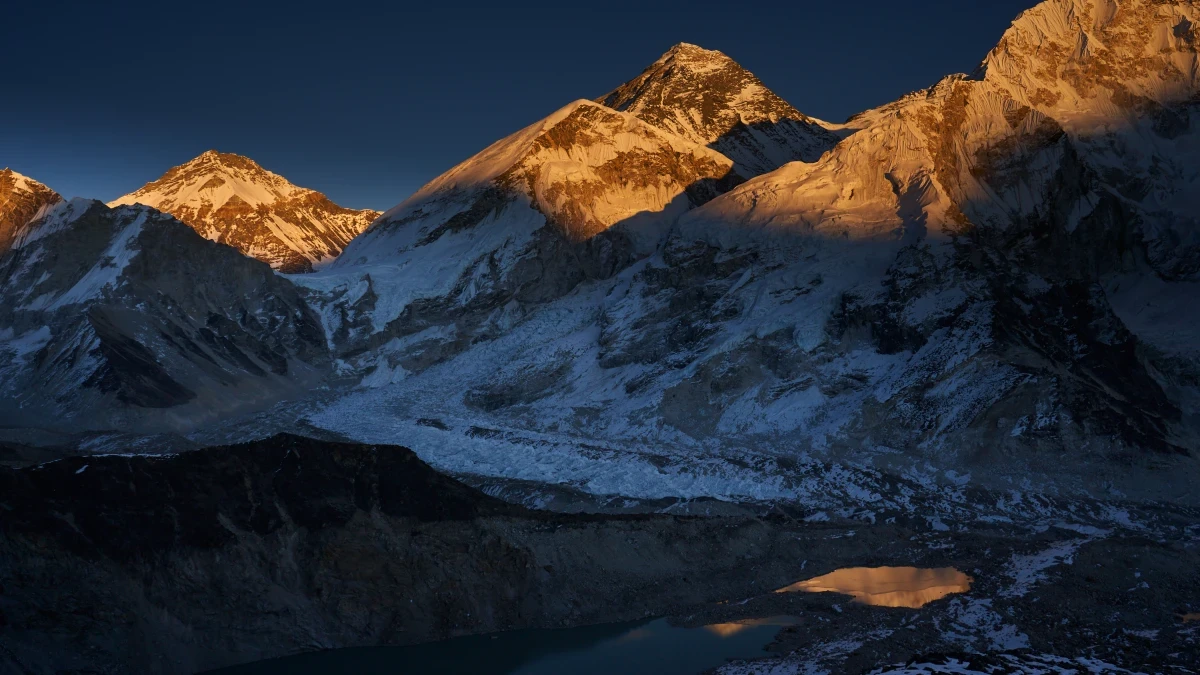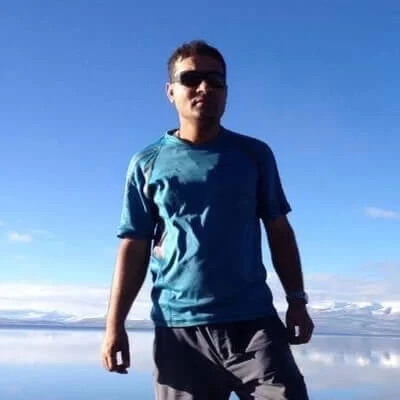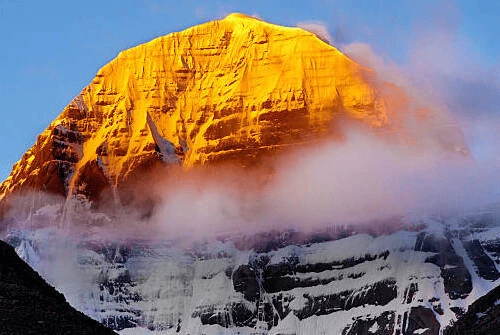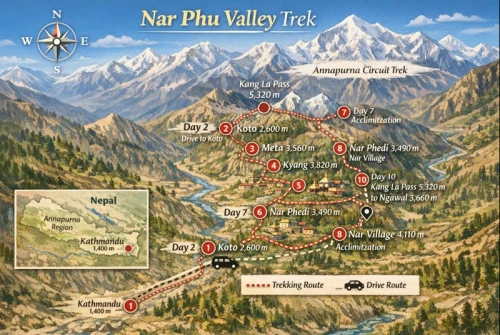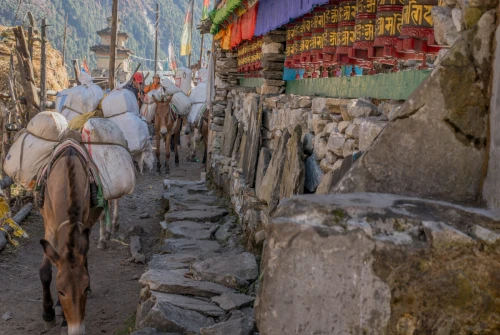Day 1: Flying to Lukla (2,800m / 9,186ft) & Trek to Phakding (2,610m / 8,562ft)
Flight Duration: 35 minutes
Trekking Duration: 4 hours
Total Trekking Distance: 6.2 km / 3.8 miles
Difficulty Level: Easy to Moderate
Altitude Gain: 190 meters / 624 feet
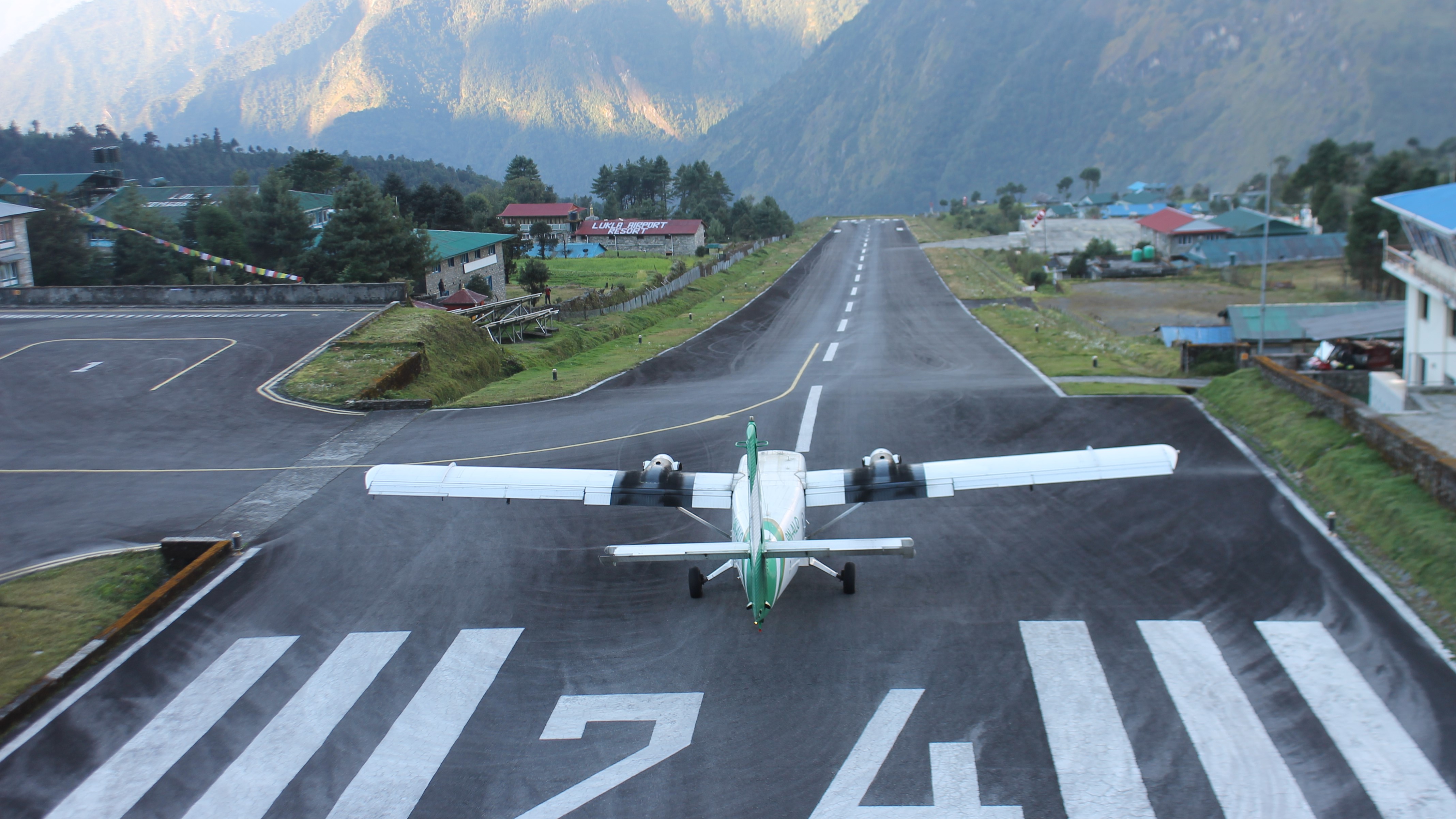
The first day of your everest base camp itinerary begins with one of the most thrilling experiences of the journey: the scenic flight from Kathmandu to Lukla, one of the most iconic airport landings in the world. Scheduled in the morning to maximize daylight for trekking, this flight offers breathtaking aerial views of the eastern Himalayan peaks, terraced hills, winding rivers, and deep valleys, making it a paradise for photographers and adventure enthusiasts alike.
Upon arrival in Lukla, our trekking staff will welcome you and assist with preparations for the trek ahead. After a short break, the hike begins through Chelpung Village and Chaurikharka Village, charming settlements that provide your first glimpse into Sherpa culture and traditional Himalayan village life.
The trekking route on Day 1 is relatively gentle, perfect for first-time trekkers, and offers spectacular vistas of Mount Khumbila, a peak considered sacred by the local Sherpa community. Along the way, trekkers cross small suspension bridges over glacial streams, hear the soothing sounds of flowing rivers, and see colorful prayer flags fluttering in the wind, adding to the spiritual ambiance of the trail.
You’ll conclude the first day in Phakding, a quaint village nestled along the Dudh Koshi River, where you will stay in a family-run tea house. Here, you can enjoy a warm traditional meal, relax, and soak in the surrounding Himalayan scenery. Day 1 is also a great opportunity to observe local flora and fauna, including rhododendron forests and Himalayan birds, while adjusting to the slightly higher altitude in preparation for the days ahead..
Day 2: Trekking to Namche Bazaar (3,440m / 11,286ft)
Trekking Duration: 6 hours
Total Trekking Distance: 7.4 km / 4.5 miles
Difficulty Level: Moderate
Altitude Gain: 830 meters / 2,723 feet
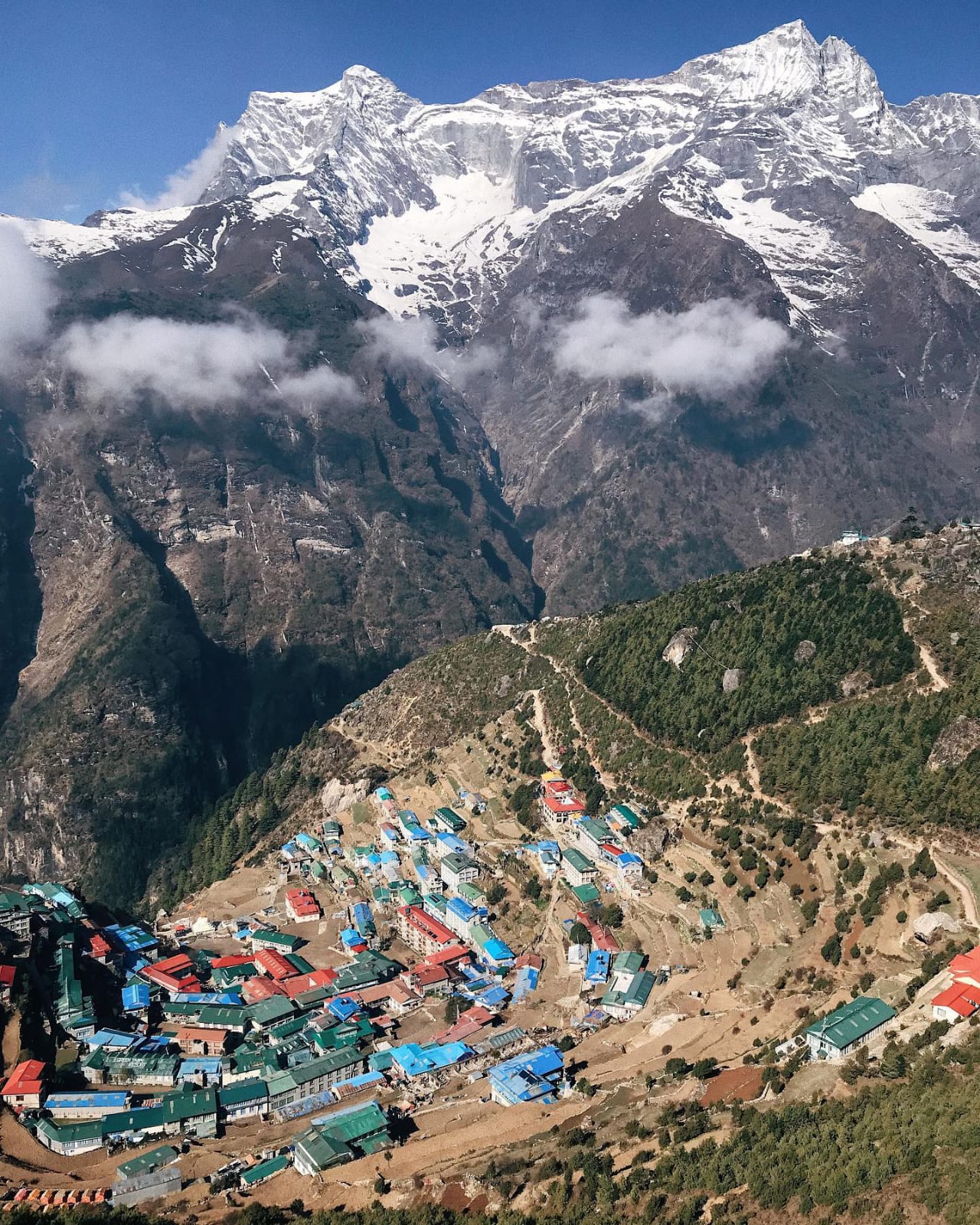
On Day 2 of your Everest Base Camp trek day-by-day itinerary, the trekking adventure begins in earnest. Today, you follow the scenic trail alongside the Dudh Koshi River, passing through high-altitude settlements that showcase the rich Sherpa culture. Villages along the route include Toktok Village, Benkar Village, Monjo Village, and Jorsale Village, each offering glimpses of traditional Himalayan life.
Monjo Village serves as the checkpoint for Sagarmatha National Park, where your trekking permit will be verified before continuing. Along the way, trekkers cross around five suspension bridges, including the famous Twin Bridge, which adds excitement and offers stunning river and valley views.
After crossing Twin Bridge, it takes about an hour of gradual ascent to reach Namche Bazaar, the Sherpa capital and the cultural hub of the Khumbu region. Along this trail, the first majestic views of Mount Everest appear from Larja Bridge, giving trekkers a breathtaking early glimpse of the world’s highest peak.
In Namche Bazaar, you can explore the bustling market, interact with local Sherpas, and enjoy spectacular panoramic views of Everest, Lhotse, Ama Dablam, and Thamserku. This is also an important day for acclimatization, as Namche is located at a significantly higher altitude. A short acclimatization hike to nearby viewpoints can help prevent altitude sickness and prepare you for the days ahead..
Day 3: Acclimatizing at Namche & Hike to Everest View Hotel (3,962m / 13,000ft)
Trekking Duration: 2 hours
Total Trekking Distance: 5.4 km / 3.3 miles
Difficulty Level: Easy to Moderate
Altitude Gain: 522 meters / 1,713 feet
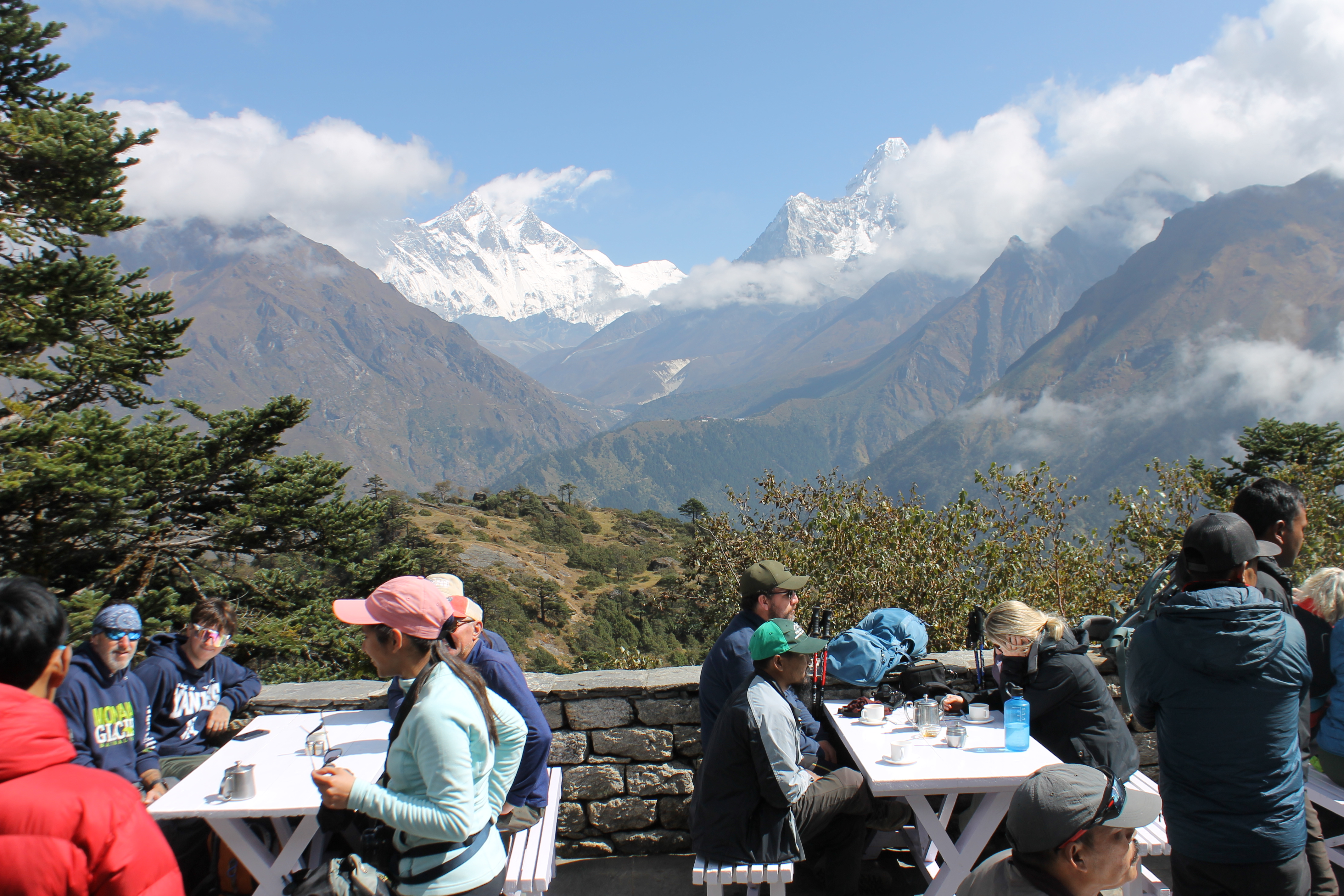
On Day 3 of your Everest Base Camp trek itinerary, the focus is on acclimatization, a crucial step before continuing to higher altitudes. Namche Bazaar, located at 3,440 meters, is the ideal base for your acclimatization day. Proper rest and a moderate hike today help your body adjust to the thinner air and reduce the risk of altitude sickness for the challenging days ahead.
The main destination for this acclimatization hike is the Everest View Hotel, perched at 3,962 meters. From here, you will be rewarded with breathtaking panoramic views of Mount Everest, Lhotse, Ama Dablam, and Nuptse, making it one of the best viewpoints in the region.
After the hike, trekkers can explore other cultural and historical highlights in the Namche area:
- Khumjung Village – home to traditional Sherpa houses and the famous Yeti scalp at the local monastery.
- Khunde Village – known for its hospital and health post, serving the local community.
- Hillary School – established by Sir Edmund Hillary for educating local children.
- Sagarmatha National Park Visitor Centre – learn about the park’s ecosystem, Himalayan wildlife, and conservation efforts.
- Khumjung Monastery – experience local spiritual practices and Buddhist traditions.
This day offers the perfect combination of gentle trekking, cultural exploration, and stunning Himalayan photography opportunities while allowing your body to acclimatize effectively before ascending to higher altitudes.
Day 4: Trekking to Tengboche (3,874m / 12,709ft)
Trekking Duration: 6 hours
Total Trekking Distance: 9.2 km / 5.7 miles
Difficulty Level: Moderate
Altitude Gain: 912 meters / 2,992 feet
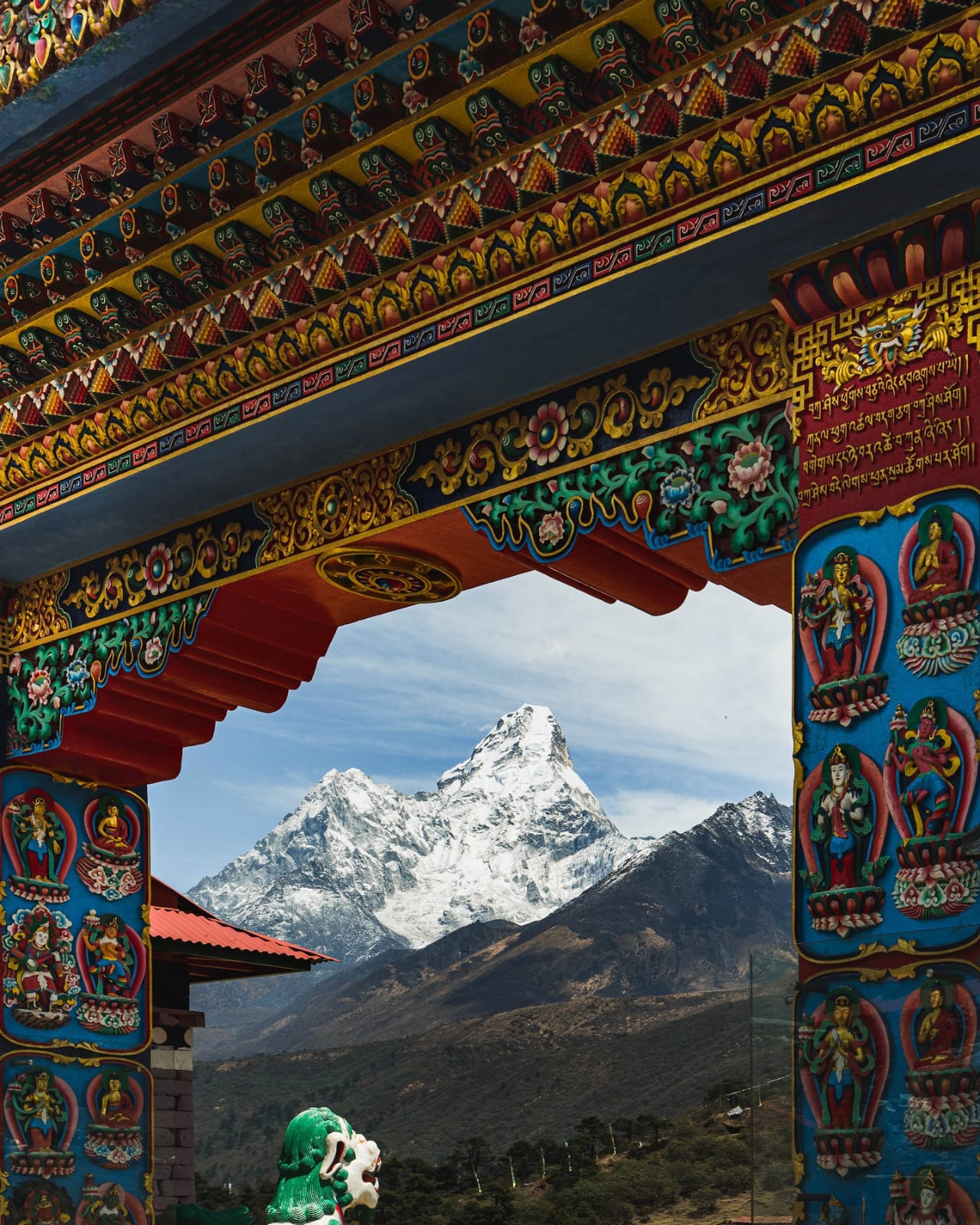
On Day 4 of your Everest Base Camp trek itinerary, the trail takes you through lush woodlands and gradually ascending paths toward Kenjoma Village, where you can pause to enjoy spectacular views of the Dudh Koshi Valley, Tengboche Hill, Mount Everest, and Ama Dablam. This segment of the trek is a visual treat for trekkers and photographers alike.
The journey continues as you pass through the scenic Sansa Village, before descending slightly toward Phunki Thenga Village for a relaxing lunch. After your break, the trail leads through dense pine forests, mani stones, and prayer flags, offering a serene hiking experience.
Your final destination for the day is Tengboche Village, home to the famous Tengboche Monastery, the largest monastery in the Everest region. Visiting the monastery in the evening allows you to witness local spiritual practices and offer prayers if desired. From here, trekkers are treated to panoramic Himalayan views of iconic peaks including Everest, Ama Dablam, Nuptse, Thamserku, and Lhotse, making Tengboche a truly unforgettable stop on the trek..
Day 5: Trekking to Dingboche (4,400m / 14,435ft)
Trekking Duration: 5 hours
Total Trekking Distance: 12 km / 7.4 miles
Difficulty Level: Moderate
Altitude Gain: 526 meters / 1,726 feet
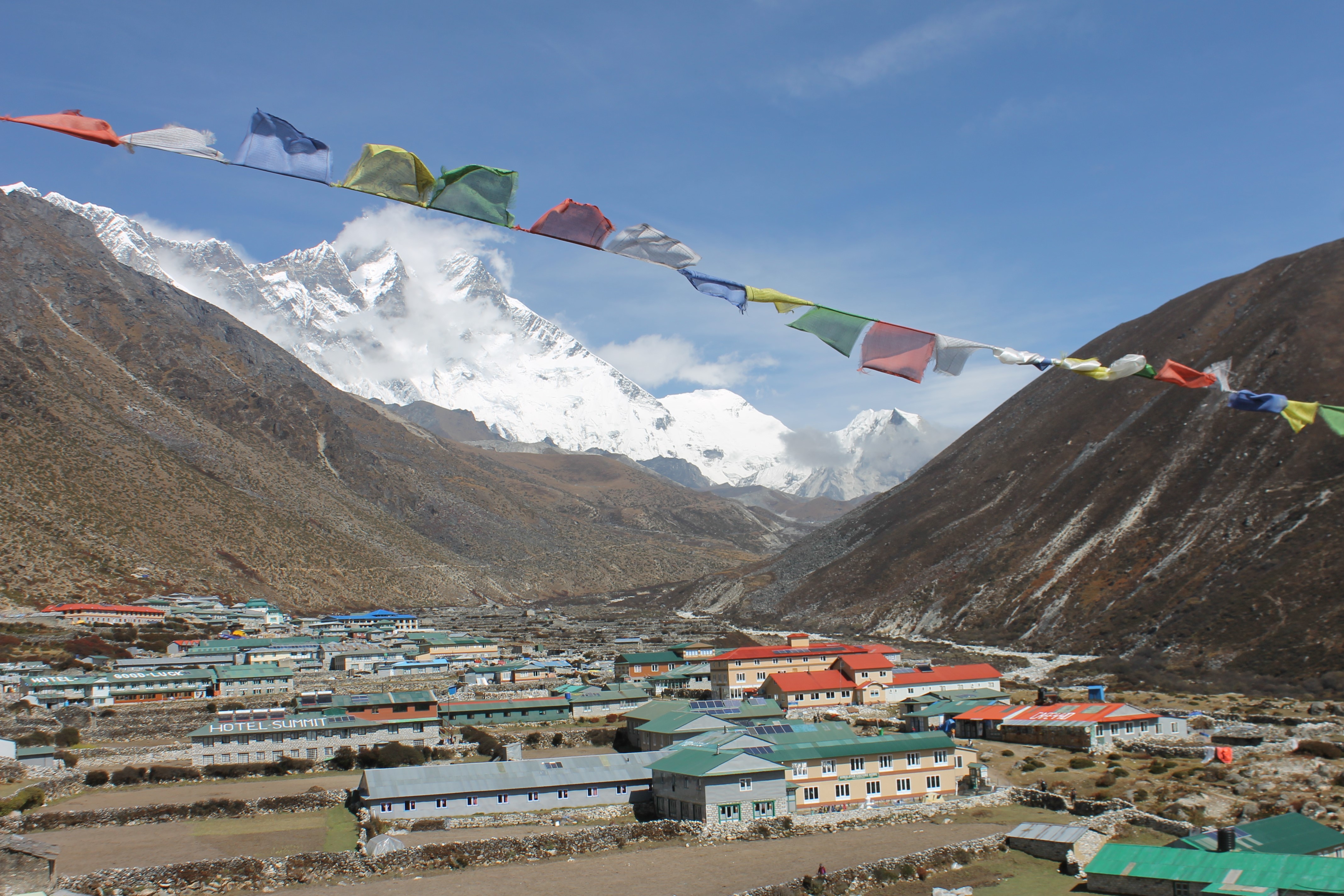
On Day 5 of your Everest Base Camp trek itinerary, the trail takes you higher into the alpine zone, where the environment becomes more rugged and the air thinner. It’s important to stay warm, keep hydrated, and pace yourself as your body adjusts to the increasing altitude.
The trek begins from Tengboche, descending through lush rhododendron, conifer, and birch forests, creating a scenic and tranquil experience. The trail gently winds down to Deboche Village, a small settlement famous for its serene monastery and charming tea houses.
From Deboche, the trek crosses the Imja Khola River and continues to Pangboche Village, home to one of the oldest monasteries in the Khumbu region. The village offers stunning views of Ama Dablam and surrounding peaks. Moving along the Imja Valley and following the Lobuche River, trekkers reach Dingboche Village, a picturesque settlement situated on a high-altitude plateau. This village provides a perfect spot for rest, acclimatization, and photographing the Himalayan landscapes.
Day 6: Resting and Exploring at Dingboche (4,400m / 14,435ft)
Trekking Duration: Optional 3–5 hours (Acclimatization Hike)
Difficulty Level: Moderate
Altitude Gain: Up to 700 meters / 2,297 feet (for acclimatization hike)
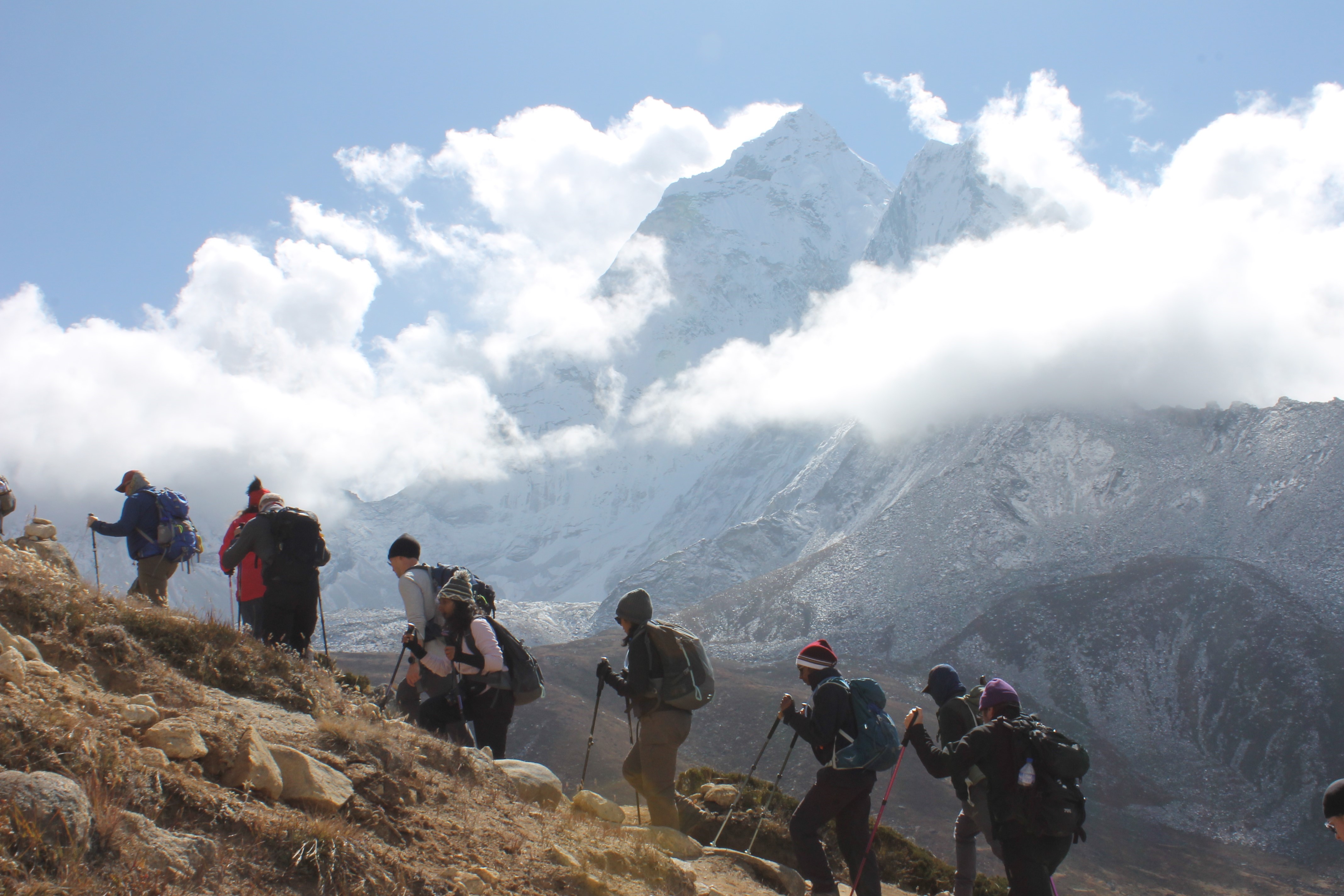
Day 6 of your Everest Base Camp trek itinerary is dedicated to rest and acclimatization at Dingboche, an essential step before ascending to higher altitudes. This day allows your body to adjust to the thinner air and reduce the risk of altitude sickness, while still offering opportunities for adventure and exploration.
Trekkers can choose to do an acclimatization hike to Nangkartshang (5,100m / 16,732ft) or explore the Chukkung Valley. These moderate hikes are perfect for boosting acclimatization and provide breathtaking panoramic views of iconic Himalayan peaks. From these vantage points, you can enjoy majestic vistas of Ama Dablam, Cholatse, Taboche, Makalu, Thamserku, Baruntse, and other towering peaks, making it a photographer’s dream.
During this day, trekkers can also explore local Dingboche culture, interact with village families, visit small monasteries, and enjoy the serenity of high-altitude Himalayan landscapes. Evening in Dingboche provides the perfect opportunity to rest, enjoy a hot meal, and prepare for the challenging ascent to Lobuche the next day.
Day 7: Trekking to Lobuche (4,940m / 16,207ft)
Trekking Duration: 5 hours
Total Trekking Distance: 8.5 km / 5.2 miles
Difficulty Level: Moderate to Challenging
Altitude Gain: 540 meters / 1,772 feet
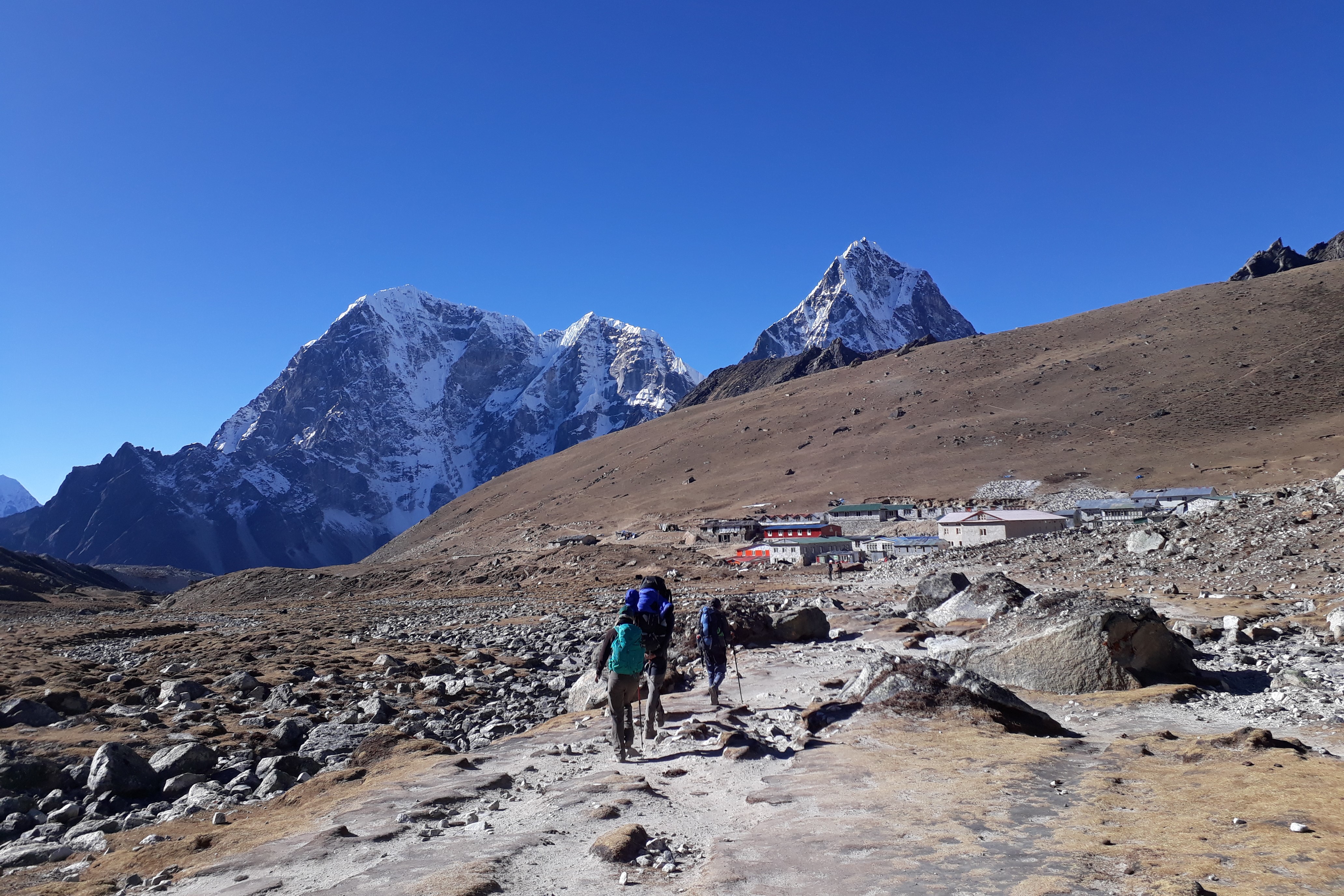
After a well-deserved rest and acclimatization day in Dingboche, Day 7 of the Everest Base Camp trek itinerary takes you higher into the Khumbu alpine region. The trail follows the ridge line overlooking the Pheriche Valley, gradually ascending while offering panoramic views of surrounding Himalayan peaks and glacial landscapes.
As you approach Dusa Village, the valley narrows, and you will cross a scenic stream before arriving at Dughla Village/ thukla village, a small settlement often used by trekkers for short breaks. The trail then leads to Thukla pass/ Dughla Pass, a significant memorial shrine dedicated to mountaineers who lost their lives in the high Himalayas, a place for reflection and awe.
The final stretch to Lobuche involves a trek across the moraine of the Khumbu Glacier, presenting a dramatic and rugged high-altitude landscape. Lobuche is a small village and high-altitude base camp, offering basic tea house accommodations and an unmatched view of Lohtse, Nuptse, and Ama Dablam, making it an ideal stop before the final push toward Everest Base Camp.
Day 8: Trekking to Everest Base Camp (5,364m / 17,598ft) via Gorakshep (5,180m / 16,994ft)
Trekking Duration: 7–8 hours
Total Trekking Distance: 15 km / 9.3 miles
Difficulty Level: Challenging
Altitude Gain: 424 meters / 1,391 feet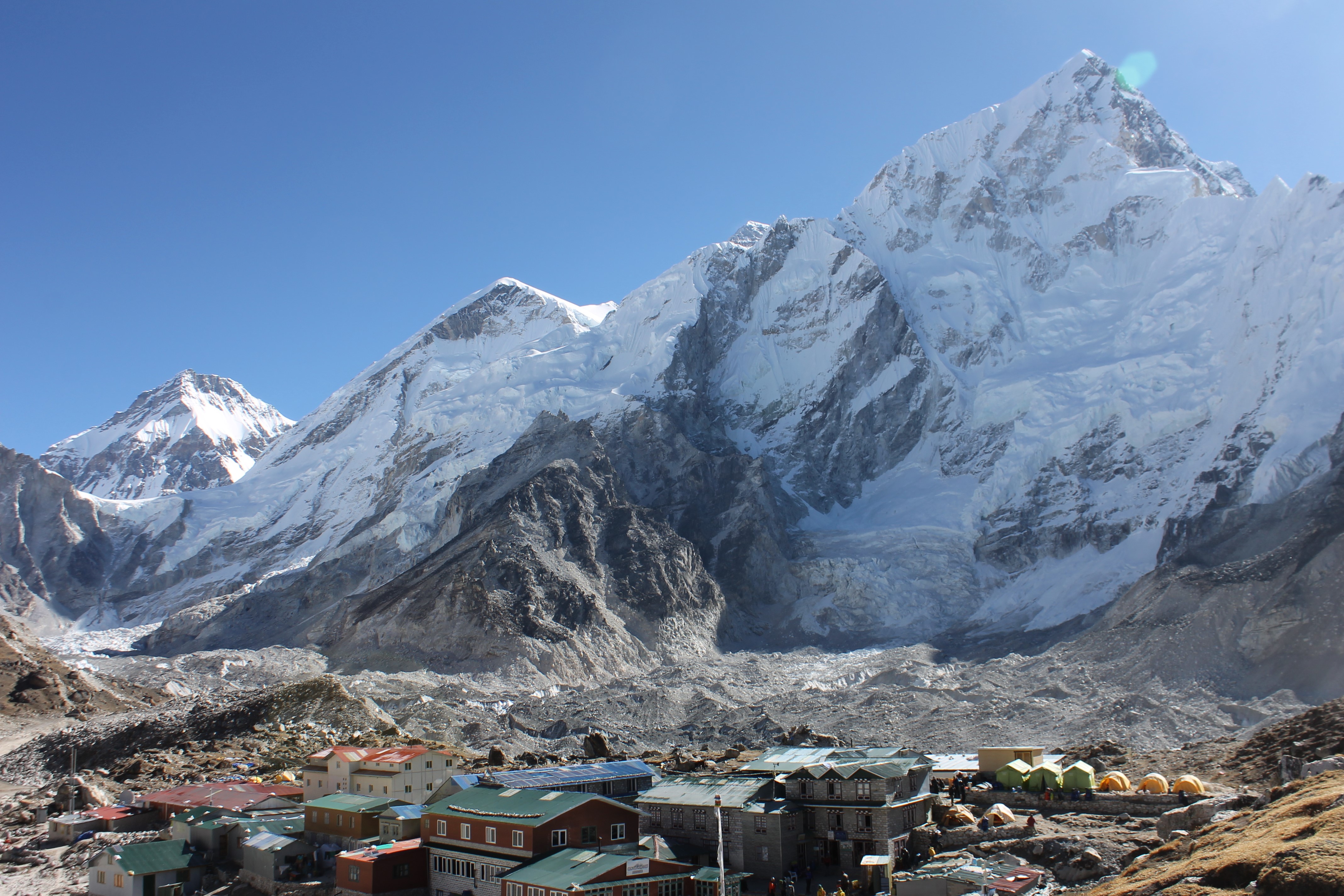
Day 8 is the most anticipated day of your Everest Base Camp trek, as you make your way toward the iconic Everest Base Camp (EBC). The journey begins from Lobuche, following the rugged Khumbu Glacier moraine, a high-altitude trail that offers a dramatic landscape of rocks, glaciers, and icefalls. Along the way, trekkers are treated to breathtaking panoramic views of Nuptse, Lhotse, Ama Dablam, and Pumori, making this section one of the most photogenic parts of the trek.
Upon reaching Gorakshep Village, the final settlement before EBC, trekkers take a short break to rest, hydrate, and prepare for the final leg of the journey. From Gorakshep, it takes approximately two hours of trekking across rocky and glacial terrain to reach the base of Mount Everest, the highest peak on Earth. Standing at Everest Base Camp, you are surrounded by towering Himalayan peaks, expansive glaciers, and the unparalleled grandeur of the Khumbu region. This is a moment to fully immerse yourself in the high-altitude Himalayan experience, capturing memories and photos of the iconic landscape.
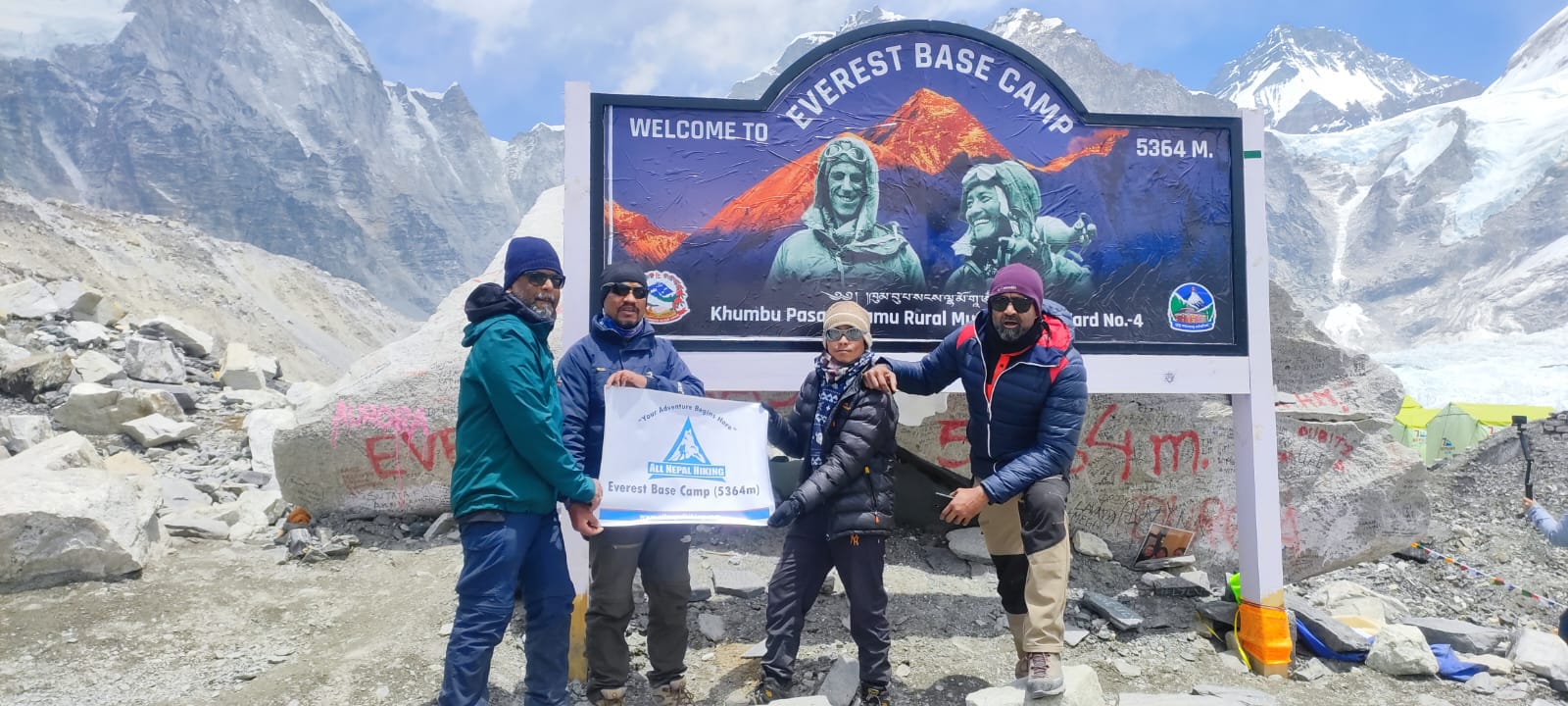
After spending time at Everest Base Camp and taking in the stunning surroundings, you will return to Gorakshep for an overnight stay. This rest is essential to prepare for the early morning hike to Kala Patthar, where trekkers enjoy the world-famous sunrise view over Mount Everest.
This day also allows trekkers to experience high-altitude trekking in Nepal, witness the beauty of Khumbu Valley trails, and appreciate the combination of adventure and natural splendor that makes the Everest Base Camp trek one of the world’s top trekking experiences.
Day 9: Hiking to Kala Patthar (5,644m / 18,517ft) & Trekking to Pheriche (4,200m / 13,779ft)
Trekking Duration: 7–8 hours
Total Trekking Distance: 9.6 km / 5.96 miles
Difficulty Level: Challenging
Altitude Gain: 1,444 meters / 4,734 feet

Day 9 of your Everest Base Camp trek begins with an early morning hike from Gorakshep to Kala Patthar, the most famous viewpoint for capturing panoramic Himalayan vistas. This hike, which takes approximately 2 hours, is slightly challenging due to the rugged mountain terrain and high altitude, but the breathtaking sunrise views over Mount Everest, Lhotse, Nuptse, Ama Dablam, Pumori, Khumbutse, and Thamserku make the effort truly worthwhile.
Unlike Everest Base Camp itself, which provides limited views of the surrounding peaks, Kala Patthar offers a 360-degree vantage point where trekkers can witness the grandeur of the Khumbu region’s towering mountains. This is also one of the top photography locations in Nepal, making it an unforgettable highlight of your journey.
After fully absorbing the beauty of the world’s highest peaks, you will descend back to Gorakshep for a brief rest and then continue your trek toward Pheriche Village. The descent follows the Khumbu Valley trail, crossing streams, moraine ridges, and high-altitude alpine terrain while passing small Sherpa settlements and mani stones that reflect the region’s rich cultural heritage.
Arriving in Pheriche, trekkers can relax, enjoy a warm meal, and rest after this high-altitude adventure, reflecting on the monumental achievement of reaching the Everest region’s most iconic sites.
Day 10: Trekking to Namche Bazaar (3,440m / 11,286ft)
Trekking Duration: 7–8 hours
Total Trekking Distance: 14.3 km / 8.88 miles
Difficulty Level: Moderate
Altitude Loss/Gain: Descending 760 meters / 2,493 feet
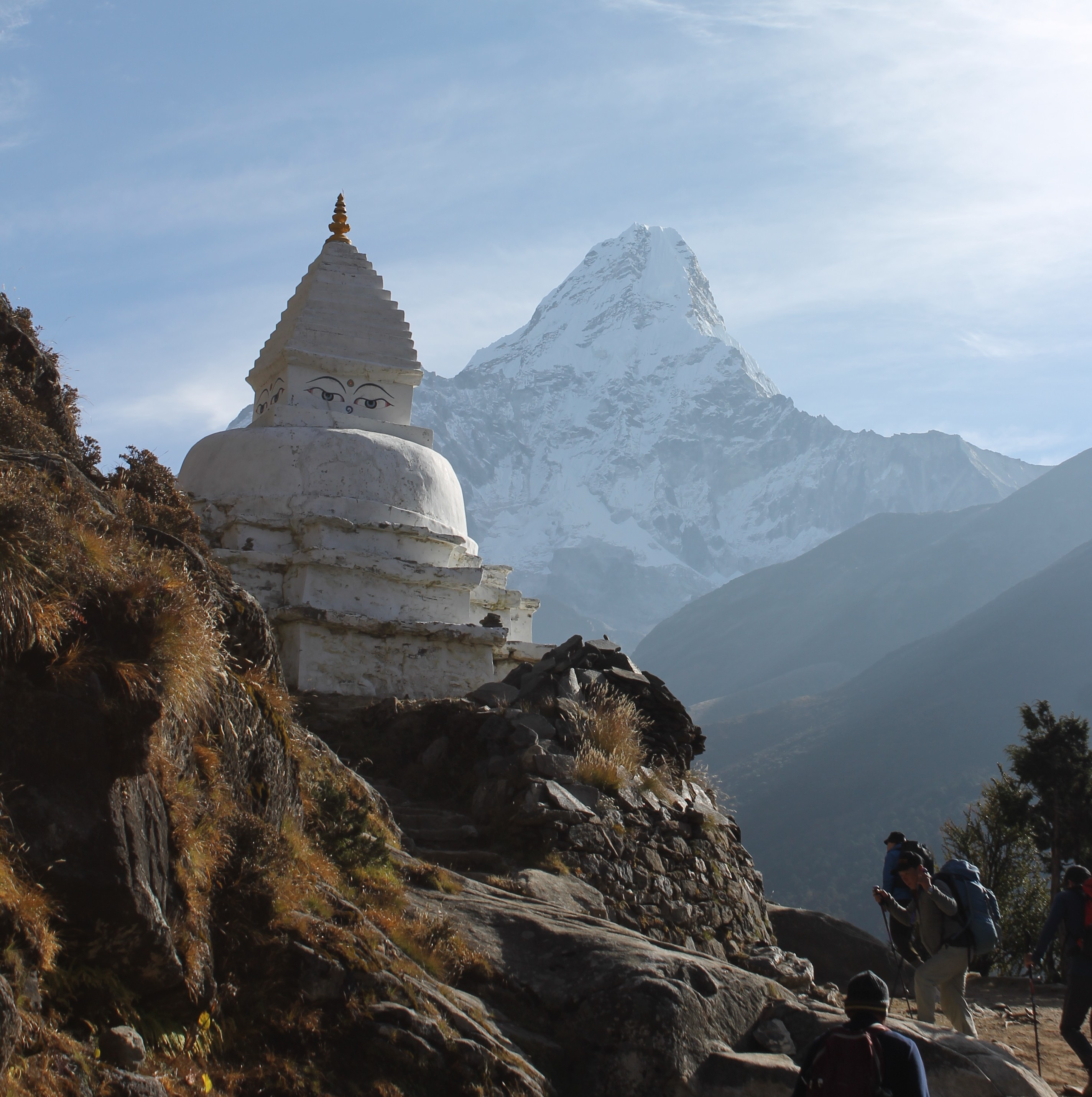
Day 10 of your Everest Base Camp trek begins with a gradual descent from Pheriche, following winding trails through rhododendron and juniper forests. The trail leads you to the banks of the Dudh Koshi River, where you will cross a suspension bridge before continuing the rapid downhill trek to Sansa Village. From here, the path weaves through more dense woodland and traditional Sherpa settlements, offering glimpses of local life and the natural beauty of the Khumbu Valley.
The trek concludes in Namche Bazaar, the vibrant hub of the Everest region. Here, trekkers can explore the lively town, browse local shops, visit cafés, and savor traditional Nepali and Sherpa delicacies that may have been missed during the high-altitude trekking days. Namche Bazaar also provides opportunities to rest, enjoy the town’s culture, and prepare for the final descent toward Lukla in the following days.
Day 11: Trekking to Lukla (2,800m / 9,186ft)
Trekking Duration: 5–6 hours
Total Distance: 13.5 km / 8.38 miles

On the final day of your Everest Base Camp trek, you will make your way back to Lukla, the gateway to the Everest region, in preparation for your return to Kathmandu. After breakfast in Namche Bazaar, you will retrace your steps along the familiar trails, following the banks of the Dudh Koshi River.
Upon exiting Sagarmatha National Park at Monjo, the trail gently ascends past Chaurikharka Village, offering panoramic views of the surrounding peaks and glimpses of traditional Sherpa settlements.
Take your time to soak in the majestic Himalayan scenery and capture the last moments of your unforgettable journey. Tomorrow, you will depart from the Everest region, carrying memories of towering mountains, vibrant local culture, and the camaraderie of the trek.
Day 12: Flying Back to Kathmandu (1,400m / 4,593ft)
Flight Duration: 35 minutes
Flying Distance: 138 km / 85.74 miles

On the final day of your Everest Base Camp trek, you will take a morning flight from Lukla back to Kathmandu. Enjoy the stunning aerial views of the Himalayan peaks, deep valleys, and Sherpa villages as your plane descends toward the capital.
Upon arrival at Tribhuvan International Airport, our staff will transfer you directly to your hotel. With an early morning flight, you will still have plenty of time to rest and explore the beautiful capital city of Nepal.
Note: This day-to-day Everest Base Camp itinerary is designed for a smooth and seamless trekking experience. If you opt for a fully-guided package, it will also include detailed arrival and departure plans, plus the option for a sightseeing tour around the Kathmandu Valley and warm farewell.

Best Time for Everest Base Camp Trek
If you want to make the most of your Everest Base Camp (EBC) trek, knowing the ideal trekking season is just as important as following the day-to-day itinerary. The best periods to undertake this trek are during spring (March, April, May) and autumn (September, October, November).
During these months, the weather is generally calm and stable, making the trekking trails safer and more enjoyable. The skies are usually clear, offering breathtaking views of Everest and surrounding Himalayan peaks, while the paths remain comfortable for walking. Each season also offers its own natural highlights—spring is famous for blooming rhododendrons, while autumn offers crisp skies and vibrant landscapes.
While spring and autumn are ideal, it is still possible to trek during the low seasons—monsoon (June, July, August) and winter (December, January, February). However, these periods present weather-related challenges, such as heavy rain, landslides, slippery trails, or extreme cold, which require careful planning and preparation.
By choosing the right season, you can ensure a safe, scenic, and seamless trekking experience, allowing you to fully enjoy the incredible journey along the Everest Base Camp itinerary.
Tips for Choosing the Best Time:
- Spring (Mar–May): Rhododendron blooms, moderate temperatures, and clearer skies.
- Autumn (Sep–Nov): Crisp weather, excellent visibility, and busy trekking season.
- Winter (Dec–Feb): Fewer crowds and snowy landscapes, but extremely cold and limited facilities.
- Monsoon (Jun–Aug): Lush landscapes but wet trails and higher risk of landslides.
Health and Hydration on the Everest Base Camp Trek
Your Everest Base Camp trek experience depends heavily on how well you maintain your health and energy at high altitude. While the scenery and culture are unforgettable, the physical challenges demand that you pay attention to your nutrition, hydration, and hygiene practices throughout the journey.
Nutrition on the Trail
Fueling your body properly is crucial. Trekking for 6–8 hours daily burns a significant amount of energy, so your diet should be rich in:
- Carbohydrates (rice, pasta, potatoes, Tibetan bread) for sustained energy.
- Proteins (eggs, lentils, beans) for muscle recovery.
- Healthy snacks (nuts, dried fruits, chocolate) for quick boosts on the trail.
Hygiene and Cleanliness
Mountain environments can be harsh on your body, so maintaining personal hygiene is key. Carry hand sanitizers, wet wipes, and avoid uncooked or street foods that may upset your stomach. Even minor stomach issues can impact your ability to trek at high altitude.
Hydration and Altitude Adaptation
Dehydration is one of the biggest contributors to altitude sickness in Nepal treks. Drink at least 3–4 liters of water daily, even if you don’t feel thirsty. Add oral rehydration salts or electrolytes to replace minerals lost through sweating. Always treat water with purification tablets, filters, or boiling before drinking.
Pro Tips for Staying Healthy on the EBC Trek
- Start hydrating a few days before your trek begins.
- Carry a reusable insulated water bottle or hydration bladder.
- Drink warm fluids like ginger tea, garlic soup, or lemon honey water for extra energy.
- Pace yourself—listen to your body and rest when needed.
- Prioritize acclimatization days to prevent high-altitude sickness.
Acclimatization on the Everest Base Camp Trek
Acclimatization is one of the most crucial aspects of a successful Everest Base Camp trek. It not only reduces the risk of altitude sickness but also gives your body the rest it needs to recover from long trekking hours. At high altitudes, the oxygen level decreases, and ascending too quickly can trigger symptoms such as headaches, nausea, dizziness, or even severe conditions like HAPE (High-Altitude Pulmonary Edema) and HACE (High-Altitude Cerebral Edema).
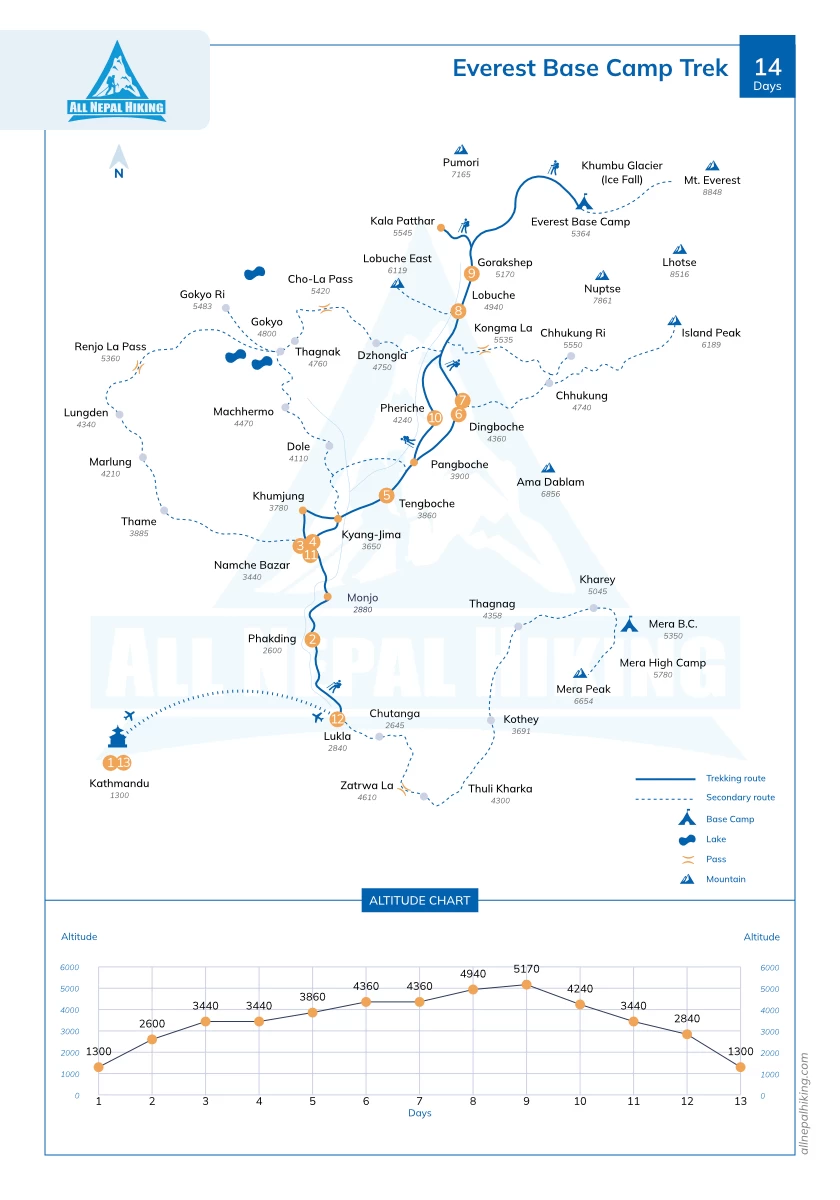
Why Acclimatization Matters
- Physical Recovery: Scheduled rest days allow your muscles and energy levels to recover.
- Altitude Adaptation: Your body gradually adjusts to lower oxygen levels.
- Enjoyment Factor: With a proper pace, you’ll have time to fully absorb the landscapes, monasteries, and Sherpa culture rather than just pushing your body forward.
Best Acclimatization Practices
- Follow the golden rule: “Climb high, sleep low.”
- Take at least two acclimatization days (commonly at Namche Bazaar and Dingboche) in the Everest Base Camp 12-day itinerary.
- Use acclimatization days for short hikes (like Everest View Hotel or Nagarjun Hill) instead of complete rest this helps your body adjust better.
- Drink 3–4 liters of water daily to reduce dehydration-related altitude issues.
- Avoid alcohol and smoking, as they hinder oxygen absorption.
Acclimatization with All Nepal Hiking
All Nepal Hiking’s 12 Days Everest Base Camp Trek is designed with a well-paced itinerary that balances trekking and rest days. This ensures proper adaptation to the alpine environment while giving trekkers the chance to explore viewpoints, monasteries, and Sherpa villages during acclimatization breaks.
For those seeking a personalized trekking plan, we also offer customizable itineraries, so you can adjust the pace, rest days, or side hikes according to your preference and fitness level.
Essential Trekking Tips for the Everest Base Camp Trek
Your Everest Base Camp trek is more than just following a day-by-day itinerary,it’s about being well-prepared for the unique challenges of high-altitude adventure. To make your journey safe, comfortable, and memorable, here are some essential trekking tips to keep in mind.
Packing Tips for Everest Base Camp Trek
One of the most important aspects of preparation is packing smart. The trek spans five climatic zones, from subtropical (below 2,000m) to the tundra zone (above 5,000m), so you’ll face dramatic temperature changes.
- Layered Clothing: Use a base layer (thermal), mid-layer (fleece or down), and outer layer (windproof/waterproof) to adjust to varying altitudes.
- Comfort at Lower Altitudes: Lightweight and breathable clothes work well in the warmer valleys.
- Warmth at Higher Altitudes: Insulated jackets, gloves, hats, and thermal socks are a must above 4,000m.
Must-Have Trekking Gear
Beyond clothing, certain trekking essentials can make your trip smoother:
- Trekking poles – for stability on steep ascents and descents.
- Sleeping bag (4-season rated) – nights can be extremely cold.
- Reusable water bottle & purification tablets – safe hydration is vital.
- Power bank & solar charger – charging facilities are limited in teahouses.
- Rain cover & dry bags – to protect gear from rain or snow.
- First-aid kit & medications – carry basics like Diamox, pain relievers, and blister care
- Hygiene products – hand sanitizers, wet wipes, and tissue paper are must-haves.
- Waste bag – practice responsible trekking by carrying out your trash.
Snacks & Energy Boosters
Bring energy bars, nuts, chocolate, and instant snacks from Kathmandu, as prices rise significantly in higher villages like Namche and Dingboche. Carry lightweight, high-calorie options to keep your energy levels up during long trekking days.
Why Trek to Everest Base Camp?
The Everest Base Camp Trek isn’t just one of the best treks in Nepal it’s a life-changing adventure that combines jaw-dropping Himalayan views, deep cultural immersion, and personal achievement at extreme altitudes. Whether you're a seasoned trekker or a first-time adventurer, the journey to Everest Base Camp is a spiritual, physical, and emotional milestone. Here's why thousands of trekkers from around the world make this pilgrimage every year:
Stand at the Foot of the World's Highest Mountain
Few experiences match the thrill of standing just below the roof of the world — Mount Everest (8,848.86m). The trek brings you face-to-face with the planet’s tallest peak, as well as stunning views of Lhotse, Nuptse, Ama Dablam, Thamserku, and Pumori. It’s a photographer's paradise and a dream for mountain lovers.
Journey Through the Heart of the Khumbu
The trail winds through Sherpa villages, ancient Buddhist monasteries, and scenic high-altitude valleys. You'll cross thrilling suspension bridges, walk beside the Dudh Koshi River, and witness prayer wheels, mani walls, and fluttering prayer flags — each step rich with cultural and spiritual symbolism.
A Spiritual Experience Beyond the Summit
This trek is more than a physical challenge, it's a spiritual pilgrimage. Whether it’s the peaceful energy of Tengboche Monastery, the sacred peaks like Khumbila, or the silent power of the Himalayas, many trekkers report feeling transformed by the deep stillness and presence of this landscape.
Test Your Limits, Discover Your Strength
Trekking to Everest Base Camp requires determination, resilience, and preparation. The thin air, cold nights, and rocky trails challenge your limits — and reward you with a powerful sense of accomplishment. It’s a trek that teaches you what you’re truly capable of.
Legendary Viewpoints and Side Hikes
From the stunning sunrise at Kala Patthar (5,644m) to hidden gems like Everest View Hotel and Nangkartshang Hill, every viewpoint offers a new angle on the Himalayas. These detours not only aid in acclimatization but deliver some of the most iconic panoramas in the world.
Cozy Tea Houses & Warm Sherpa Hospitality
Each night is spent in family-run tea houses offering simple but cozy lodging, home-cooked meals, and warm conversations with fellow trekkers and locals. The genuine hospitality of the Sherpa people is one of the most heartwarming parts of the entire journey.
Affordable Bucket List Adventure
Unlike other bucket-list expeditions, the Everest Base Camp Trek is surprisingly affordable. You don’t need technical climbing gear or experience. A well-planned 12- to 14-day itinerary offers epic adventure without breaking the bank, especially when compared to peak expeditions.
Disconnect to Reconnect
With no Wi-Fi in many areas, minimal distractions, and a slower pace, the trek gives you time to unplug and reconnect with nature, yourself, and your journey. The peaceful trails offer mental clarity and the chance to reflect, heal, and grow.
Witness Dramatic Natural Diversity
From rhododendron forests in spring to snow-covered ridges in winter, the Everest Base Camp trek passes through five climate zones. You’ll see alpine wildlife, glaciers, and possibly even Himalayan monals, yaks, or blue sheep along the trail.
Be Part of Trekking History
Walk in the footsteps of Sir Edmund Hillary and Tenzing Norgay. The trail is soaked in mountaineering history with stories, memorials, and legacies that inspire you at every turn. It’s not just a hike, it's a legacy you become part of.
Trekking to Everest Base Camp is more than a physical challenge; it's a soul-stirring journey into some of the most breathtaking, inspiring, and culturally rich landscapes on Earth. Whether you're chasing high-altitude thrills, deep spiritual moments, or simply ticking off a dream trek, the EBC trail delivers on all fronts.
Top 10 FAQs About the Everest Base Camp Trek
1. How long does the Everest Base Camp trek take?
The classic itinerary takes 12 days, including two acclimatization days in Namche and Dingboche. Some itineraries extend to 14–16 days, while faster or helicopter return options are also available.
2. What is the highest point of the trek?
The highest elevation is Kala Patthar at 5,644m (18,517ft) offering the best sunrise views of Everest, Lhotse, and Nuptse. The actual Everest Base Camp sits at 5,364m (17,598ft).
3. How difficult is the trek to Everest Base Camp?
It’s a moderate to strenuous trek, depending on your fitness level. No climbing is required, but the altitude, long trekking hours (5–8 hours/day), and cold conditions make it challenging.
4. What is the best time to trek to Everest Base Camp?
The best seasons are:
- Spring (March–May) – clear skies, wildflowers
- Autumn (September–November) – crisp air, best visibility
5. How do I avoid altitude sickness on this trek?
- Acclimatize properly in Namche and Dingboche
- Follow the rule: climb high, sleep low
- Stay hydrated (3–4L/day)
- Ascend slowly
- Avoid alcohol
- Consider Diamox with medical guidance
6. Do I need a guide and porter?
Guides are not mandatory but highly recommended for:
- Navigation
- Cultural insight
- Safety
- Permit handling
A porter helps carry your backpack, reducing physical strain and increasing your chances of completing the trek.
7. What are tea houses like?
Expect basic but welcoming accommodations with:
- Simple beds and blankets
- Communal dining rooms
- Hot food (dal bhat, soups, pasta, etc.)
- Paid hot showers, limited charging & Wi-Fi in higher villages
8. How much does the Everest Base Camp trek cost?
Estimated budget (per person):
- Independent trek: $900–$1,200
- Guided group trek: $1,100–$2,000
- Luxury packages: $2,500+
This includes Lukla flights, permits, food, lodging, guide/porter (if hired), and gear.
9. What should I pack for the EBC trek?
Must-haves:
- Layered clothing (base, mid, outer)
- 4-season sleeping bag
- Down jacket, gloves, beanie
- Trekking poles, sturdy boots
- Reusable bottles, water purification tabs
- Snacks, headlamp, solar charger
- Basic first-aid kit & altitude meds
10. Is the Lukla flight safe?
Yes, Lukla flights are operated by experienced mountain pilots, but they are weather-dependent. Delays or cancellations are common. Book morning flights and leave buffer days in your itinerary for flexibility.
Final Thoughts: Why the Everest Base Camp Trek Is Truly Worth Every Step
The Everest Base Camp trek isn’t just a trail, it’s a pilgrimage to the roof of the world. Every step takes you deeper into the heart of the Himalayas, where ancient traditions, awe-inspiring landscapes, and the resilience of the human spirit meet.
You’ll walk through villages where time seems to pause, cross swinging suspension bridges over roaring rivers, and stand face-to-face with legends like Mount Everest, Lhotse, and Ama Dablam. It’s a journey that challenges your body, awakens your soul, and humbles your heart.
With the right preparation and an open mind, this trek becomes more than just a bucket-list item ,it becomes a life-defining adventure. Whether it’s the majesty of the mountains, the warmth of the Sherpa people, or the sense of purpose found in every breathless ascent, the Everest Base Camp trek leaves a mark that lasts forever.
Because once you've stood in the shadow of Everest, you never walk the same way again.
